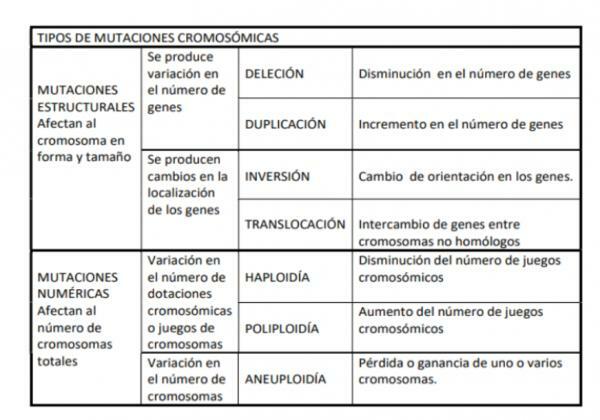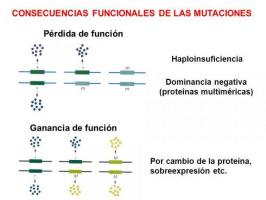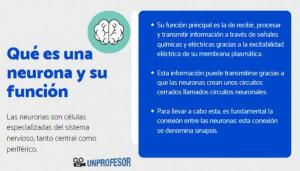Types of chromosomal MUTATIONS

The chromosomal mutations They are genetic mutations in which the alteration in the DNA sequence is due to changes that affect the structure of a chromosome, the number of chromosomes or even the entire genome. In this lesson from a TEACHER we are going to discover what they consist of and what types of chromosomal mutations exist.
To begin, a brief summary of the types of chromosomal mutations classified according to the type of changes that occur in the chromosome when the mutation occurs.
We leave you one table that we have developed so that you can better understand the classification:

On the chromosomes, DNA combines with protein molecules in highly compacted molecular structures. The compact form that DNA takes to form chromosomes is known as condensed DNA.
Each chromosomeIt is made up of chromatids. Chromatids are each of the DNA molecules that make up the genome of an organism in its condensed form. They are rod-shaped that presents a narrowing that is called the centromere and divides the chromatid into two segments called arms.
Depending on the number of chromatids, the chromosomes can be:
- Simple chromosomes: chromosomes made up of a single chromatid. Simple chromosomes are those that cells present after cell division.
- Duplicate chromosomes: formed by two sister chromatids that are two DNA molecules identical to each other, because one of the molecules is a copy obtained from the other in the DNA replication process. The two sister chromatids are joined at the centromere. Duplicated chromosomes are those that cells present at the beginning of the cell division process.
Structural mutations are one of the types of mutations chromosomes that exist. They affect the structure of the chromosome by losing fragments of the chromosome arms, adding fragments from another chromosome or by the change in the orientation or position of a fragment of chromatid.
There are structural mutations that cause variation in the number of genes (deletion and duplication) while other structural mutations do not change the total number of genes but their position on the chromosome (inversion and translocation).
Deletion
Decrease in the number of genes due to the loss of a chromatid fragment in one of the arms of the chromosome. This type of mutation can affect any chromosome and more or less large fragments of these. Depending on the importance of the genes that have been lost, the alterations that the individual will present will be of greater or lesser severity.
There are numerous examples of congenital syndromes or diseases that are caused by the loss of genetic information due to chromosomal deletions. In many cases, these types of mutations can cause severe metabolic abnormalities and significant delays in cognitive development.
Examples
- Chromosome 22 deletion or DiGeorge syndrome: In this case, the deletion causes the loss of a small fragment of chromosome 22 and this causes various alterations of a metabolic and physical such as: cleft palate, deficiencies in the functioning of the immune system, cardiac malformations and delayed growth.
- Chromosome 5p deletion or cri-du-chat syndrome: This is the deletion in the short arm of chromosome 5 and causes a cry similar to the meowing of a cat in the newborn. This syndrome presents serious alterations in physical and intellectual development such as microcephaly (skull excessively small), syndactyly (fusion through membranes of fingers or toes) or malformations cardiac.
Duplication
Duplication is a chromosomal mutation that causes an increase in the number of genes because there are extra copies of a fragment of the chromosome, which may include a greater or lesser number of genes.
They are especially common in plants and represent an important mechanism in the evolutionary process. In humans chromosomal duplication mutations are responsible for some of the diseases.
Example:
Chromosome 22 fragment duplication: It is the duplication of a small fragment of chromosome 22 that includes between 30 and 40 genes. The consequences of this syndrome are highly variable. Most individuals with the mutation have no apparent involvement, while others have abnormalities in cognitive development, slow growth, and low muscle tone (hypotonia).
Translocation
Exchange of genes between non-homologous chromosomes, producing a modification in the location of the genes.
Translocations are relatively common but do not usually cause abnormalities in individuals who undergo them. present, because the translocation mutation is balanced (there has been neither gain nor loss of material genetic).
However, these mutations can cause sterility problems or in the offspring that can present developmental problems cognitive, since gametes present this mutation in an unbalanced way, (with an extra piece of a chromosome or the absence of a fragment).
Investment
In chromosomal reversal mutations there is a change of sense in the order of the genes. For this type of mutations to occur, it is necessary for a chromosome segment to break and for it to rejoin with a 180 degree turn (the other way around). In most cases, these mutations do not cause health problems in people who are carriers.
Example:
Type A hemophilia in humans: This hemorrhagic-type disease in which the blood clotting process is affected is caused by an inversion of the X chromosome and is the most common form of hemophilia (70% of cases).
Another of the types of chromosomal mutations that exist are numerical mutations, those that affect the number of chromosomes. They can affect the entire chromosomal makeup or only some of the chromosomes that are part of the individual's genetic makeup.
There are two types of numerical mutations that affect the entire chromosome makeup:
Polyploidy:
In polyploid mutations there is an increase in the number of chromosomal endowments or sets of chromosomes. This type of mutation is common in plants and rare in animals.
In plants, polyploidy is a very important evolutionary mechanism that plays an essential role in adaptation and in the creation of new species.
Polyploidy in plants occurs spontaneously in nature and increases in frequency in hot climates. It is also possible to induce polyploidy in plants experimentally in the laboratory using chemical compounds such as colchicine.
Example:
A very important plant polyploid is wheat (Triticum aestibum) which is hexaploid (6n).
Haploidy:
The haloploid mutation is one in which there is a decrease in the number of chromosomal endowments, going from diploid (2n) to haploid (n).
This type of mutation has very little evolutionary importance since it is a type of mutation that in most cases is incompatible with life.
Aneuploidy
In the case of aneuploidies, there is no exact number of chromosomal endowments or sets of chromosomes because they are a mutation that results in variation in the number of one or more chromosomes, without affecting the entire envelope genetics. This variation in the number of chromosomes can occur by excess or by defect, this supposes an imbalance that usually has more serious consequences in animals than in plants.
Example:
Down syndrome or chromosome 21 trisomy: in this case, the individual with this mutation has a complete additional chromosome and its endowment chromosome number is 2n + 1 (that is, 47 chromosomes instead of the 46 of the normal chromosomal allocation in humans). People with this genetic condition have characteristic physical features and have an IQ that is usually mild or moderately low.
Pascual Calaforra, Luis F. · Silva Moreno, Francisco J. Basic principles of genetics. (2018) Madrid: Synthesis


